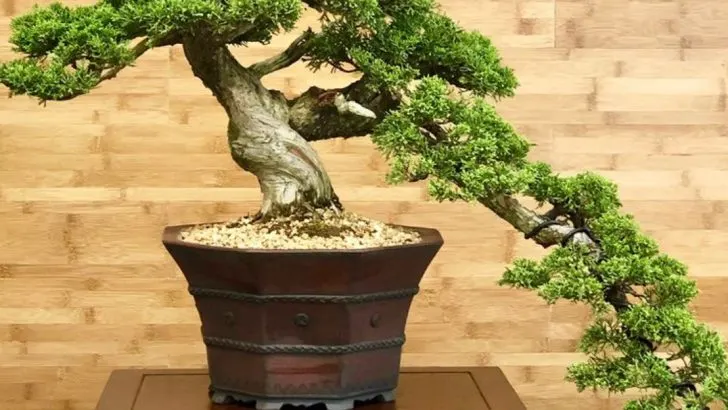Plants aren’t just for growing—they can also be trained and shaped into stunning spirals, arches, and intricate designs. With the right techniques, certain plants can be coaxed into eye-catching forms, turning your garden into a living work of art.
In this article, we explore 19 plants that can be trained to grow in spirals, arches, or shapes. From climbing vines that twist elegantly to trees pruned into sculptural masterpieces, these plants are perfect for adding a touch of whimsy and creativity to your outdoor space. If you love artistic gardening, these shapeable plants will transform your landscape!
Wisteria
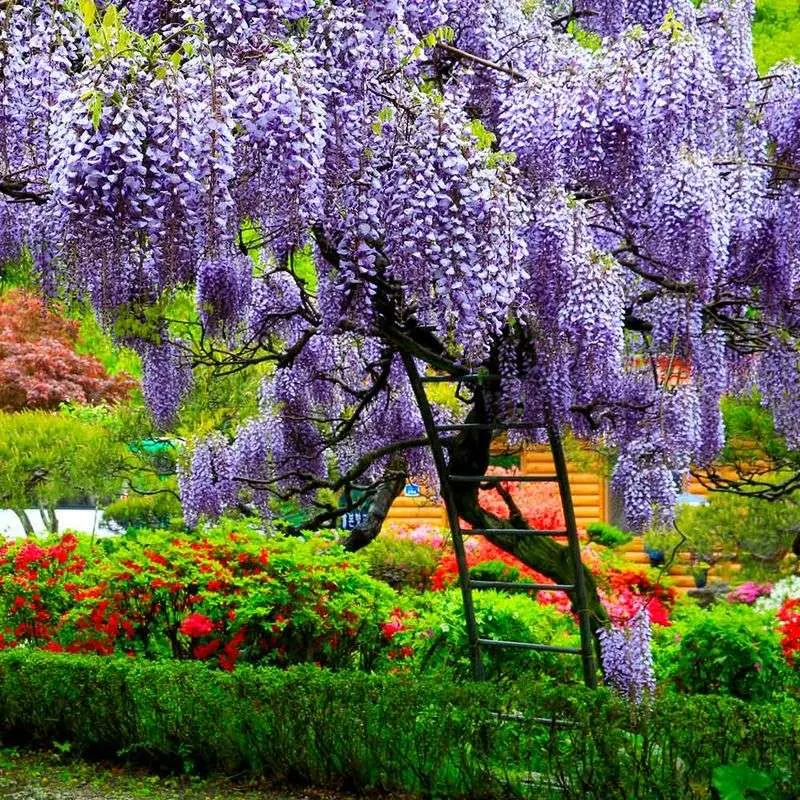
With its cascading lavender blooms, wisteria is perfect for training over arches. Start with young plants for flexibility and guide them around your chosen structure. Regular pruning ensures the plant maintains its shape and encourages new growth. Over time, wisteria can transform a simple garden path into a floral tunnel. Imagine walking under a canopy of blossoms, their fragrance filling the air. Remember, patience is key—wisteria may take several years to bloom, but the reward is a breathtaking display that captivates any visitor.
Topiary Boxwood
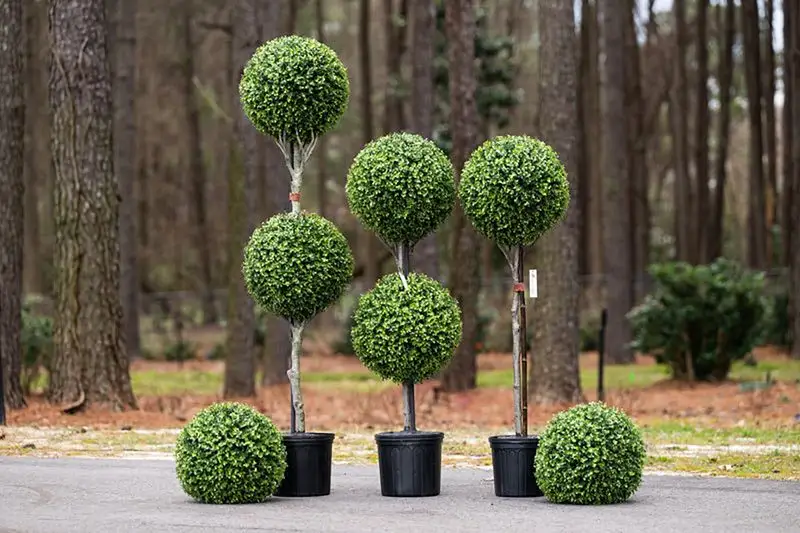
Boxwood is a favorite for topiary enthusiasts, lending itself well to shaping. Its dense foliage allows for precision in crafting spirals and other intricate forms. Regular trimming maintains the desired design and keeps the plant healthy. Boxwood thrives in well-drained soil and partial shade. Visualize a garden filled with geometric shapes and whimsical figures—each one a testament to careful cultivation. Boxwood’s versatility and enduring appeal make it a staple in formal gardens worldwide.
Bonsai Juniper
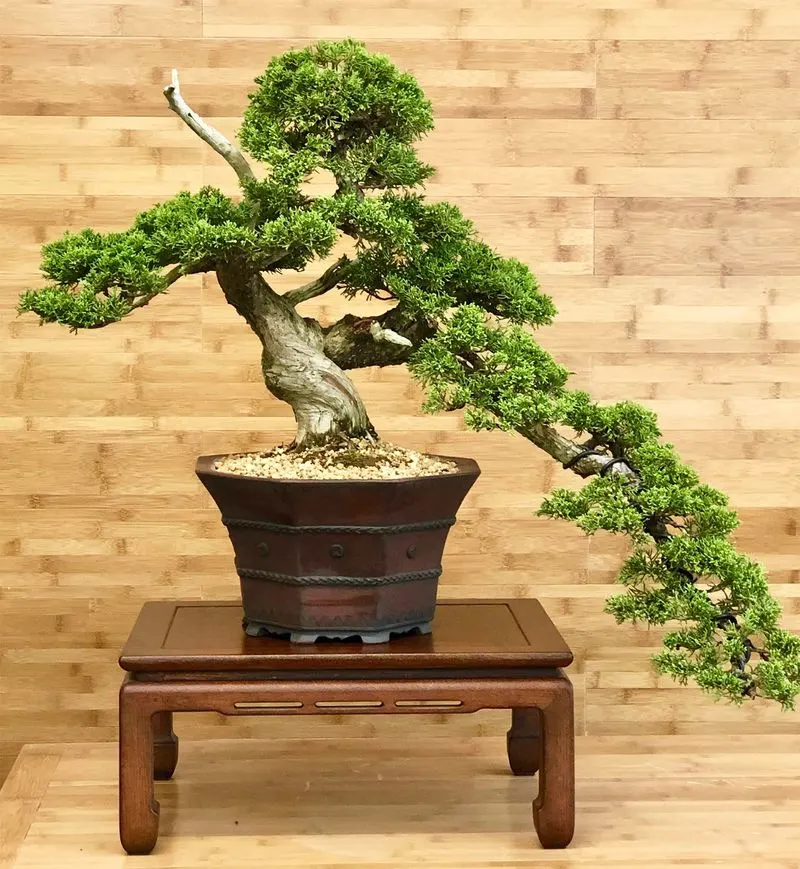
Bonsai represents the art of shaping miniature trees, and juniper is a popular choice for its malleable branches. Training a juniper involves wiring branches to create elegant curves and directional growth. Regular pruning and repotting are essential to maintain its miniature stature. Bonsai offers a meditative practice, connecting one with nature through patience and precision. The result is a living sculpture that reflects harmony and balance, serving as a focal point in both indoor and outdoor spaces.
Climbing Roses

Roses, universally loved for their beauty and fragrance, can be trained to climb trellises and arches. Select a climbing variety and provide sturdy support for their vigorous growth. Pruning is key to encouraging blooms and shaping the plant. As they ascend, roses create a picturesque backdrop for any garden. Envision a cascade of colorful petals, each one a testament to nature’s artistry. Climbing roses not only enhance visual appeal but also attract pollinators, enriching the garden’s ecosystem.
Espaliered Apple Trees

Espalier is the technique of training trees to grow flat against a structure, perfect for small gardens. Apple trees make an excellent choice, as they are responsive to this method. Focus on creating a strong framework with evenly spaced branches. Regular pruning is necessary to maintain the form and encourage fruiting. Espaliered trees offer both beauty and functionality, providing a harvest of fresh apples within an elegant, crafted space. This method combines practicality with aesthetic charm, ideal for compact areas.
Clematis
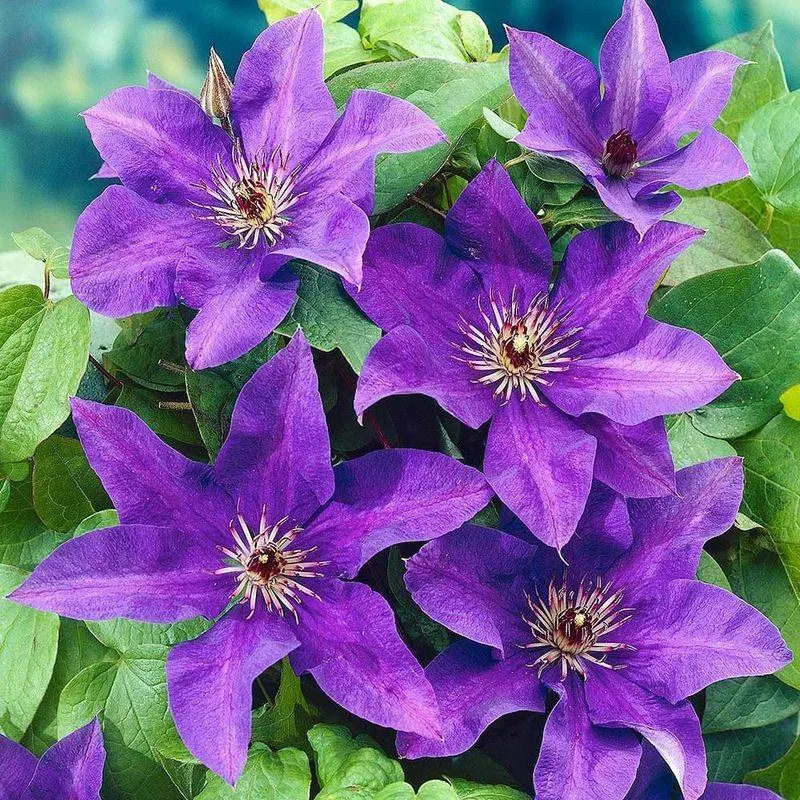
Clematis, with its vibrant blooms and twining vines, is perfect for softening structures like trellises and fences. Choose a suitable variety and offer ample support for its climbing habit. Routine pruning encourages flowering and maintains shape. Imagine a cascade of colors as clematis weaves its way upward, transforming bare spaces into floral displays. This plant not only enhances the visual appeal of the garden but also provides a habitat for beneficial insects.
Topiary Holly
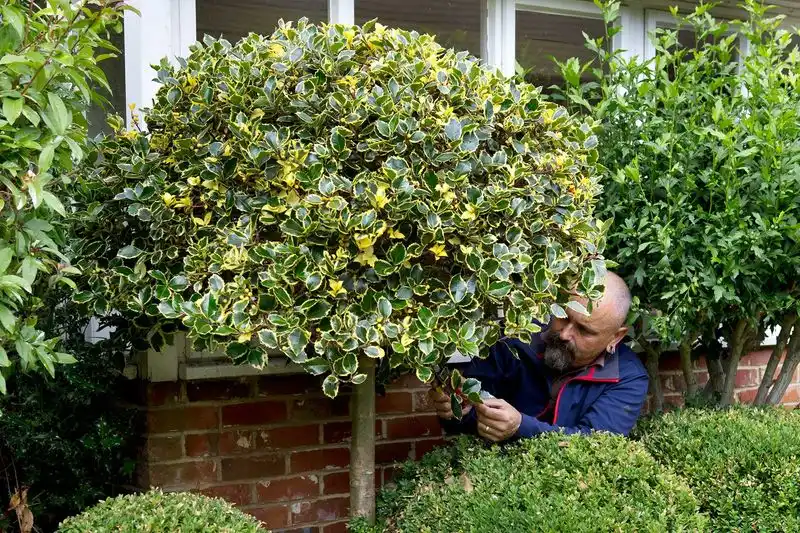
Holly bushes are ideal for topiary due to their dense, glossy foliage. Craft spheres, cones, or more complex figures with careful pruning. Holly grows well in various conditions, making it a versatile choice. Picture a winter garden adorned with holly topiaries, their evergreen leaves adding year-round structure and interest. These shaped plants can become focal points or complement other garden elements, offering both formality and festivity.
Japanese Maple
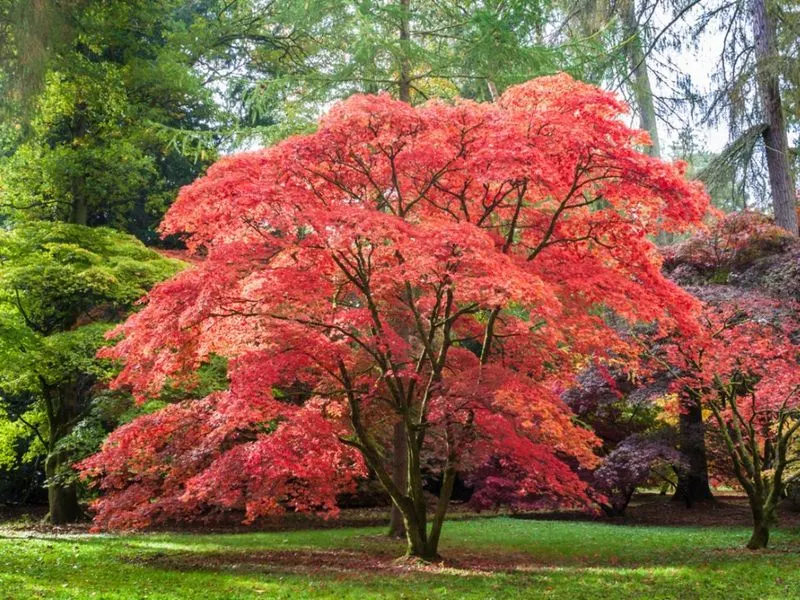
Japanese maples are cherished for their delicate leaves and graceful form. While not traditionally shaped into spirals, their natural habit can be accentuated with careful pruning. Highlight the tree’s elegance by guiding branch growth and removing any that disrupt the desired shape. Imagine a striking silhouette against the sky, the tree’s fiery colors adding seasonal interest. Japanese maples serve as a breathtaking focal point in any landscape, their beauty celebrated through careful cultivation.
Ivy
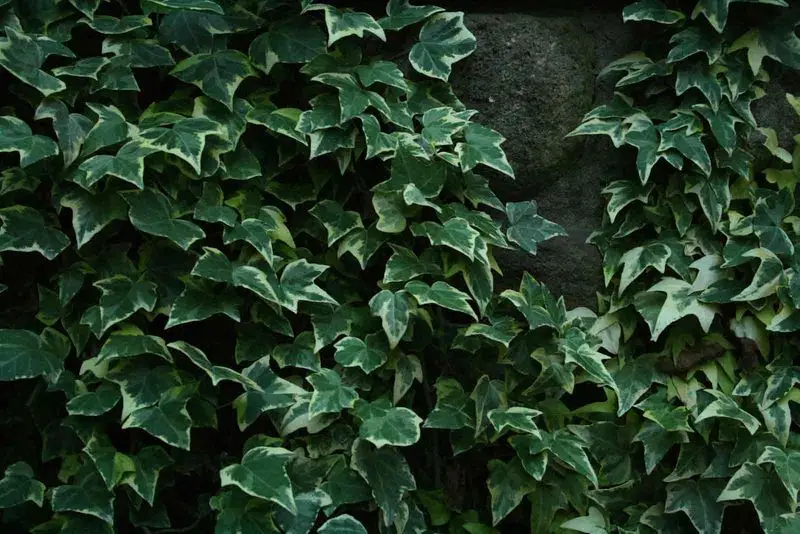
Ivy is a versatile climber, ideal for creating lush, green backdrops. Train it to cover walls or grow in specific patterns using wire frames. Routine trimming controls growth and encourages a dense cover. Ivy’s ability to cling to surfaces allows for creative expression, transforming brick and stone into living canvases. Envision the soothing green of ivy enveloping structures, adding texture and depth to outdoor spaces. Its adaptability makes ivy a popular choice for both traditional and modern gardens.
Bougainvillea
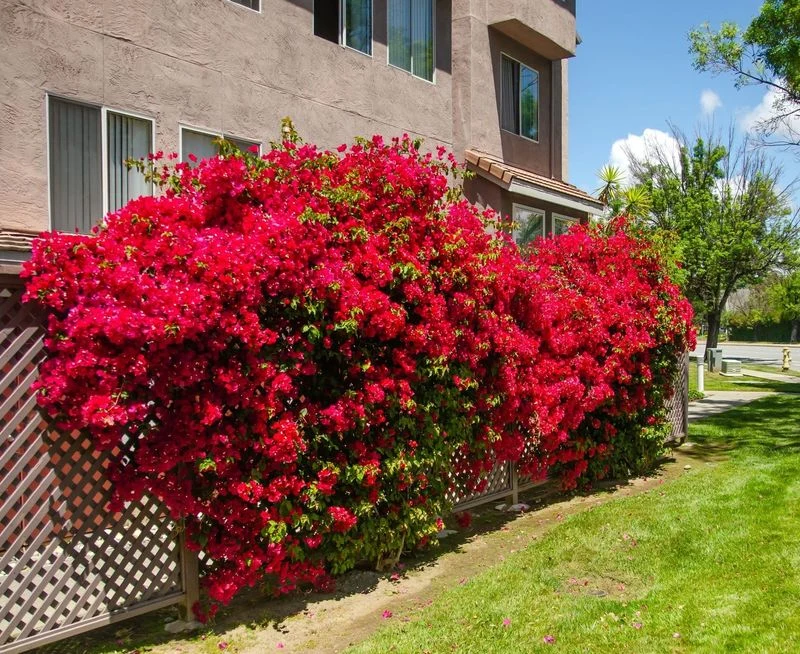
With its vivid bracts and vigorous growth, bougainvillea is excellent for training over trellises and pergolas. Provide ample sunlight and sturdy support to accommodate its sprawling habit. Regular pruning helps manage its size and encourages prolific blooming. Picture a cascade of color against the backdrop of a sunny terrace, each bloom a splash of brightness. Bougainvillea adds an exotic flair to gardens, its resilience and beauty making it a favorite in warmer climates.
Pyracantha (Firethorn)

Known for its vibrant berries and thorny branches, pyracantha is suitable for hedging and shaping. Train it along walls or fences, and prune regularly to maintain form. Its dense growth offers privacy and security, while the berries add seasonal color. Visualize a hedge teeming with wildlife, as birds flock to its berries in fall. Pyracantha’s adaptability and visual appeal make it a valuable addition to gardens seeking structure and vibrancy.
Ficus Pumila (Creeping Fig)
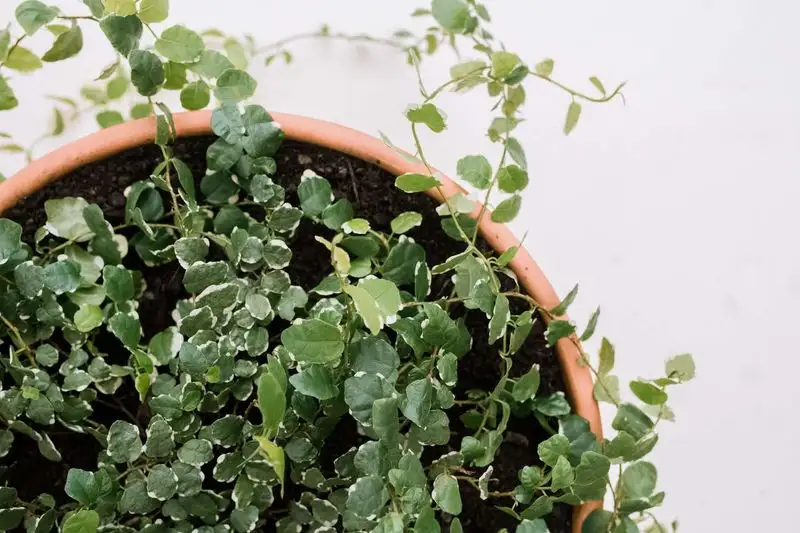
The creeping fig is ideal for covering walls and arches with its small, adhesive leaves. Train it onto surfaces using simple supports, and trim regularly to control growth. This plant turns ordinary structures into lush, green tapestries. Imagine a garden where every wall is alive and vibrant, the creeping fig providing a backdrop of texture and depth. Its tenacity and ease of growth make it a favorite for gardeners looking to soften hardscapes.
Sweet Pea
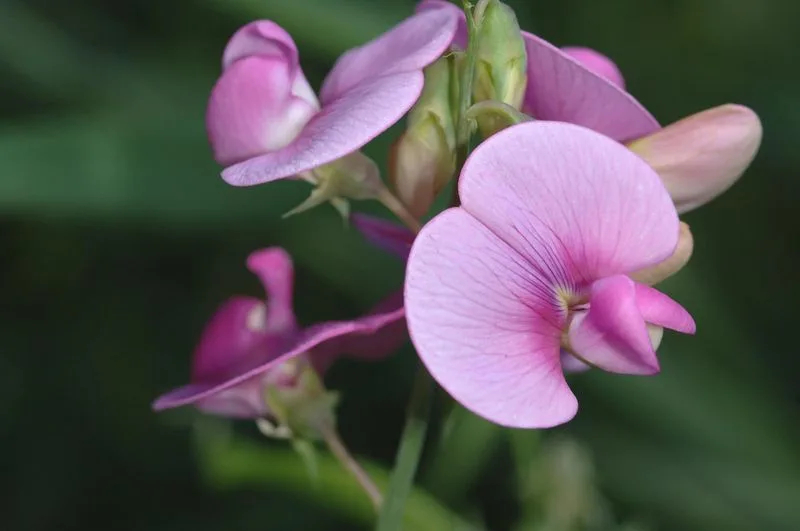
Sweet peas, with their delicate flowers and enticing fragrance, are perfect for training on trellises. Choose a sunny spot and provide sturdy support for these annual vines. Regular deadheading prolongs their bloom season, offering months of color. Picture a garden filled with the sweet scent of blossoms, each one a delicate work of art. Sweet peas not only beautify spaces but also attract pollinators, enhancing the garden’s biodiversity.
Honeysuckle
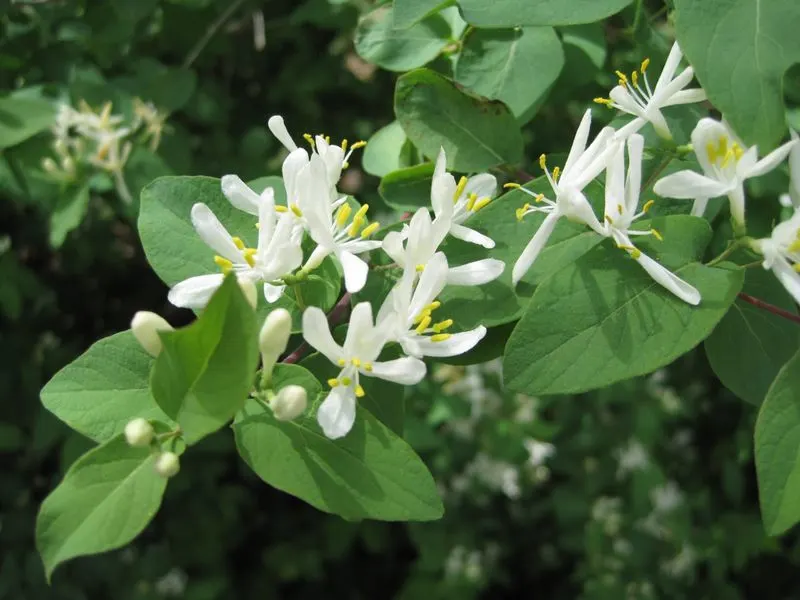
Honeysuckle is cherished for its sweet fragrance and vigorous growth. Train it over fences or arbors, providing support for its twining habit. Pruning maintains its shape and encourages abundant flowering. Envision evenings filled with the scent of honeysuckle, its blooms attracting hummingbirds and butterflies. This plant adds a sensory delight to gardens, combining visual beauty with olfactory charm, making it a cherished addition to any landscape.
English Yew

Yew is a versatile conifer, ideal for formal hedges and topiary. Its dense, evergreen foliage allows for precise shaping, from simple hedges to complex sculptures. Regular pruning keeps the plant healthy and maintains its form. Picture a garden framed by yew hedges, their lush green offering year-round structure and privacy. Yew’s adaptability and classic appeal make it a timeless choice for traditional garden designs.
Passionflower
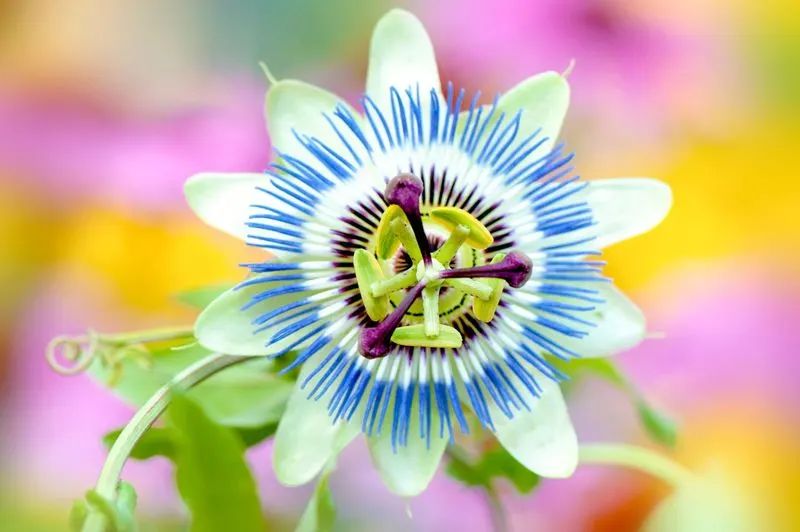
The exotic blooms of passionflower captivate with their intricate design and vibrant colors. Train this vine on trellises or arbors, providing ample sunlight and support. Pruning is essential to encourage growth and manage its size. Imagine a garden transformed by the passionflower’s dramatic presence, each bloom a marvel of nature’s artistry. This plant not only enhances visual appeal but also provides habitat for butterflies, enriching the garden’s ecosystem.
Bamboo
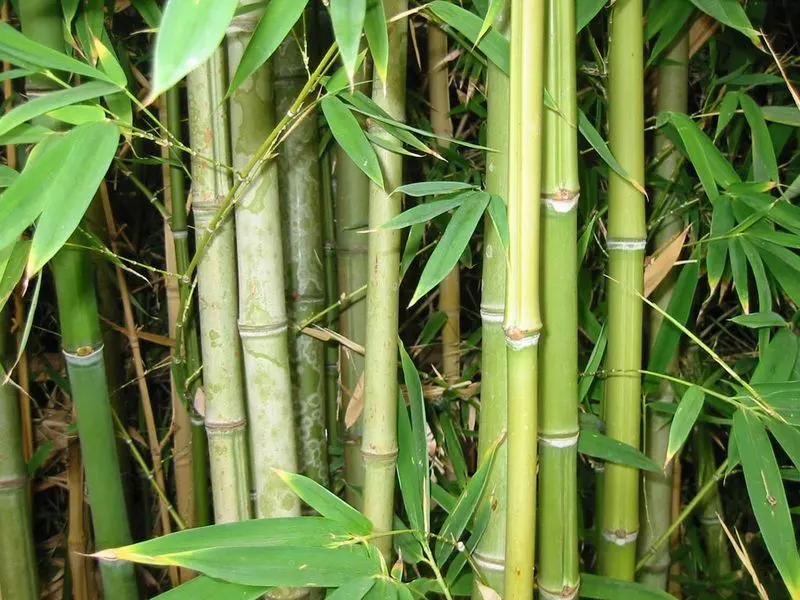
Bamboo, with its fast growth and tall stems, can be trained for privacy screens or shaped into arches. Using guiding ties and strategic pruning, bamboo’s natural form can be directed elegantly. Consider a peaceful garden scene where bamboo sways gently, its presence both calming and majestic. Bamboo’s versatility makes it suitable for various garden styles, offering structure and movement.
Morning Glory
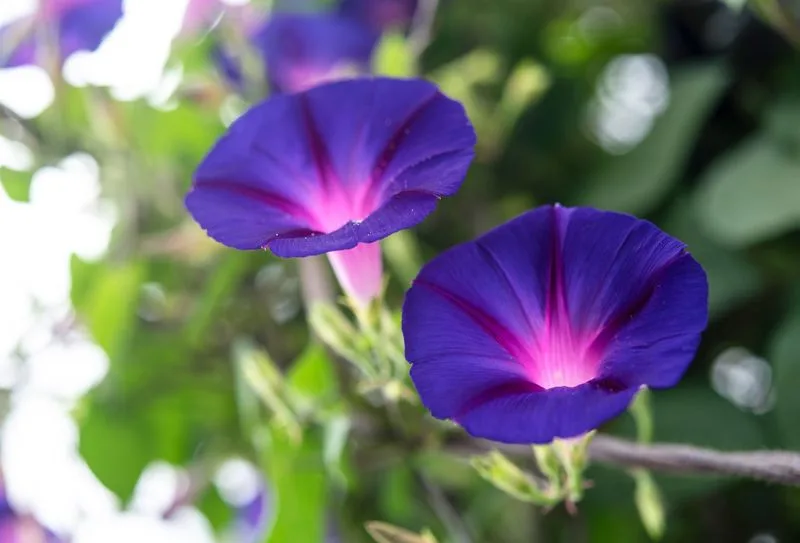
Morning glory’s vibrant blooms and rapid growth make it a favorite for quick coverage. Train it on fences or trellises, ensuring plenty of sunlight for optimal flowering. Regular deadheading prolongs the bloom period, creating a continuous display of color. Picture a garden painted with morning glory’s hues, each flower greeting the day with open petals. This plant’s ease of cultivation and cheerful presence make it a staple in cottage gardens and beyond.
Hops
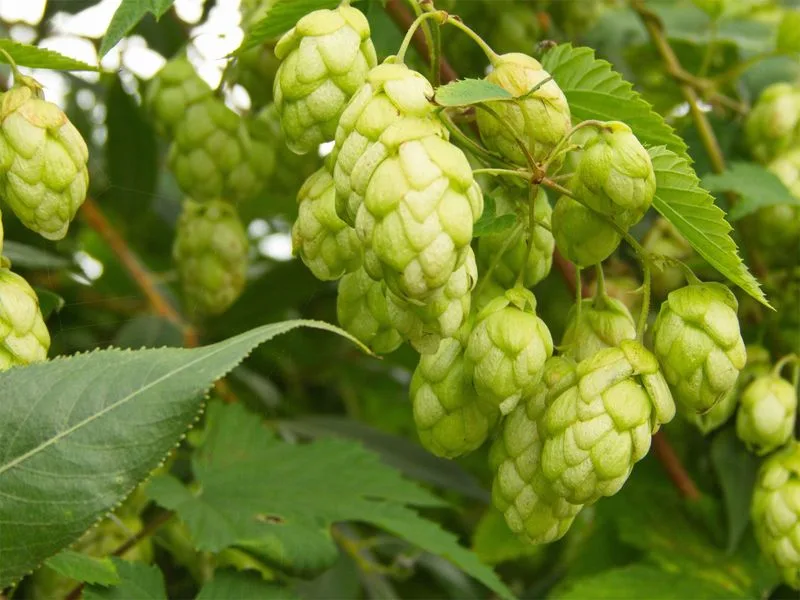
Hops are not just for brewing; they also make excellent climbing plants. Train them on tall poles or trellises, providing support for their vigorous growth. Regular pruning helps manage size and encourages healthy development. Imagine a vertical garden where hops create a verdant curtain, their cones adding texture and interest. In addition to their visual appeal, hops can be harvested for use in home brewing projects, offering both beauty and utility.

